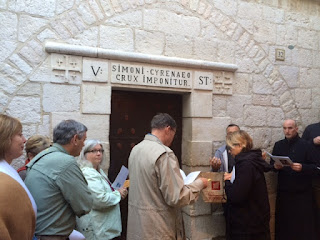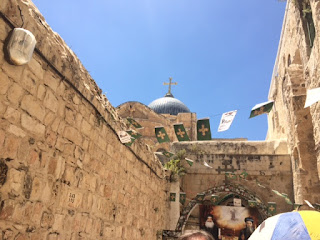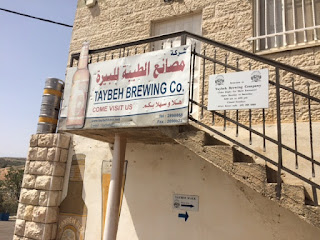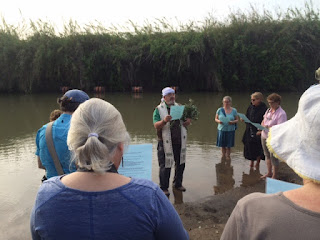In fact, the quote I was trying to retrieve comes from John Dominic Crossan. (Although I do think at some point I first came across it in a book or article where Borg was quoting Crossan!) Maybe. Maybe not.
But for anyone interested in getting it right, you can click here to the prologue of Crossan's The Power of Parable. Here is the quote I was trying to get to:
A first clue that Luke 24:13-33 was meant as a parable and not history is that when Jesus joins the couple on the road, they do not recognize him. He is, as it were, traveling incognito. A second one is that even when he explains in detail how the biblical scriptures pointed to Jesus as the Messiah, they still do not recognize him. But the third and definitive clue to the story’s purpose is in the climax and it demands full quotation:As they came near the village to which they were going, he walked ahead as if he were going on. But they urged him strongly, saying, “Stay with us, because it is almost evening and the day is now nearly over.” So he went in to stay with them. When he was at the table with them, he took bread, blessed and broke it, and gave it to them. Then their eyes were opened, and they recognized him; and he vanished from their sight. They said to each other, “Were not our hearts burning within us while he was talking to us on the road, while he was opening the scriptures to us?” (24:28-32)That is parable, not history. The Christian liturgy involves Scripture and Eucharist—but they are not equal. The Scripture—even interpreted by Jesus himself—will do no more than create “burning hearts,” that is, hearts ready but to do what? The Eucharist invites the stranger in to share one’s meal and find that the stranger is Jesus. You will notice that the key verbs, “took, blessed, broke, gave,” in the Emmaus story’s climax were also used in the Last Supper’s Passover meal before Jesus’ execution (Mark 14:22)
That story is a parable about loving, that is, feeding, the stranger as yourself and finding Jesus still—or only?—fully present in that encounter. That was very clear to me decades ago and I summed up the ancient Christian intention and modern Christian meaning of that parable by saying that “Emmaus never happened. Emmaus always happens.” That is, by the way, an introductory definition of a parable: a story that never happened but always does—or at least should. (emphasis mine)In his homily today, Brother Curtis said all of this far more succinctly: "this story is true, whether or not it happened." Indeed.
 We gathered at one of eight "Emmauses" today - a different one from the one where I shared the Eucharist with pilgrims six years ago. I think they are all the "real one." Emmaus is the road that leads from Jerusalem to the east and west and north and south. It is the road to Tel Aviv, the road to Worcester, the road to Hawley. Emmaus is code-language for being a people on the Way - a people who encounter Jesus in Word and Sacrament whenever the bread is taken, and blessed, and broken, and given - wherever the stranger is welcomed to the table.
We gathered at one of eight "Emmauses" today - a different one from the one where I shared the Eucharist with pilgrims six years ago. I think they are all the "real one." Emmaus is the road that leads from Jerusalem to the east and west and north and south. It is the road to Tel Aviv, the road to Worcester, the road to Hawley. Emmaus is code-language for being a people on the Way - a people who encounter Jesus in Word and Sacrament whenever the bread is taken, and blessed, and broken, and given - wherever the stranger is welcomed to the table.A new friend and fellow pilgrim, a priest from England named Andrew, presided at today's Eucharist. As part of our liturgy he blessed our icons and crosses and other remembrances that we'll be taking home with us to remember this experience or to share with others. I am grateful for the traveling companions I've shared this pilgrimage with, and those of you back home who read this blog faithfully. I hope if you have not yet come to this land of the Holy One that your time comes to do so. But whether or not you come, I hope you experience Emmaus wherever two or three gather together in Christ's name and the Word is proclaimed, and the Meal is shared.
Shalom/Salaam. God's peace for all.
















































